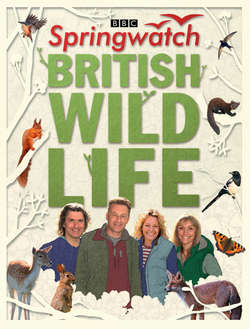Читать книгу Springwatch British Wildlife: Accompanies the BBC 2 TV series - Stephen Moss - Страница 24
ОглавлениеBarn Owl
©Phil McLean/FLPA
The barn owl is very vulnerable to snowy weather as the snow covers up its food supply of voles and mice.
Despite its obvious affinity with our other British owls, the barn owl is in fact from a separate, though related, family. It is by far the most cosmopolitan and widespread of all the world’s owls, being found in six of the world’s seven continents (the exception being, of course, Antarctica), and on many remote offshore islands.
Here, in Britain, the barn owl is well known as a bird of open, mainly arable farmland, where it hunts at dawn and dusk. Barn owls float over the ground on soft, virtually silent wings, thanks to a special adaptation, which makes their wing feathers almost down-like in their quality, muffling any sound. Unfortunately, this advantage is also the barn owl’s Achilles heel, as its plumage gets waterlogged very easily, which means it cannot hunt when it is raining. During prolonged periods of wet weather, this can be disastrous, especially when the owls have hungry chicks in the nest. Often they will abandon their first breeding attempt and try again later in the season, if and when the weather improves.
Harsh winter weather can also be very bad for barn owls: prolonged periods with snow on the ground means that their food supply of voles and other small rodents are unavailable, and many starve to death during cold winters. The barn owl relies heavily on voles for food. Their populations rise and fall in cycles, resulting in ‘good vole years’, which lead to a boom in barn owls, but also ‘bad vole years’, when barn owl numbers may plummet, especially if they coincide with a wet summer or icy winter.
Like many predators at the top of the food chain, including the sparrowhawk and peregrine, barn owls were also badly hit by the indiscriminate use of agricultural pesticides such as DDT in the post-war farming boom. The final problem these beautiful birds face is the danger from traffic: they fly so low when hunting that they are especially vulnerable to being hit by cars or lorries, and their corpses can often be seen along major roads, especially in their stronghold of EastAnglia.
With all these hazards, it might seem surprising that barn owls are actually doing reasonably well at the moment. This is partly because farmers and conservationists have joined forces to put up nest boxes in their barns and other farm buildings, which the barn owls take to readily.
Barn owls have a unique breeding strategy, to help them cope with the unpredictability of the weather and their intermittent food supply. Since they cannot predict how much food they will be able to bring back for their chicks, they begin incubating as soon as the first egg is laid, which means that the youngsters vary considerably in size and strength. In a good year, as many as six chicks may be raised to fledging, but in a bad year all but one may die. In a grisly twist to this, the oldest chicks will sometimes eat their younger siblings.
When breeding, the parent birds maximise their chances of finding food by using their extraordinarily sensitive hearing: their heart-shape face pattern and slightly asymmetrical ears enable them to focus the sound coming from an unsuspecting vole, and also to pinpoint its exact location. Once they have zeroed in on this, they drop down to the ground to grab the prey in their razor-sharp talons.
Like other owls, the barn owl has attracted its fair share of folklore. Its bizarre, screeching call, which has given it the alternative name of ‘screech owl’, may be uttered from spooky castle towers or battlements. This, combined with the barn owl’s snow-white plumage, is surely responsible for at least some of the many ghost stories associated with these ancient locations.
